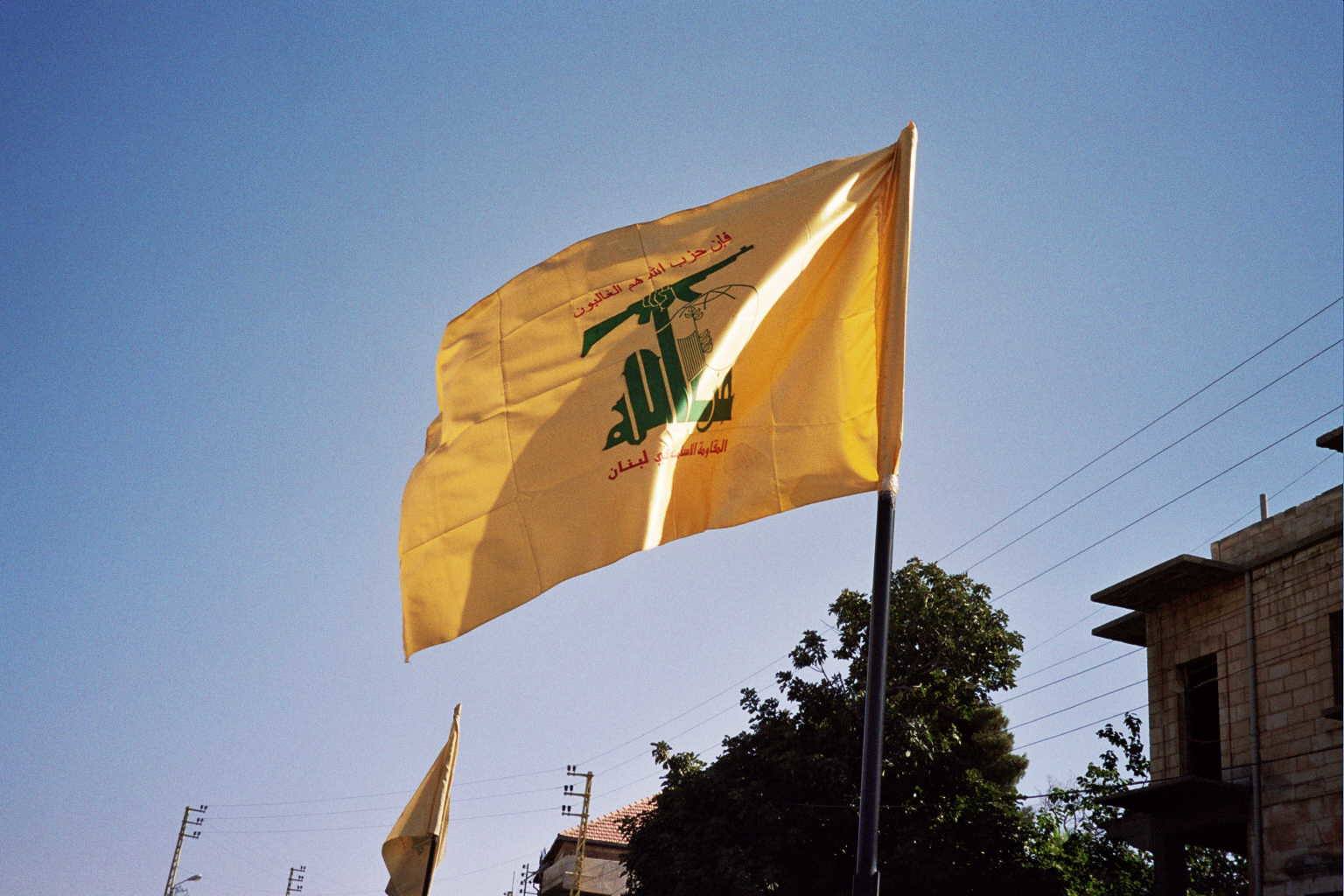What the United States Should Do About the Terrorist Threat to Pakistan

Published by The Lawfare Institute
in Cooperation With

Editor’s Note: The Tehrik-e-Taliban Pakistan (TTP) is resurgent, once again sowing mayhem in Pakistan, but now doing so from its base in Afghanistan. American University’s Tricia Bacon explains why the TTP is again on the rise and argues that the United States should provide calibrated assistance to Pakistan as the TTP could again threaten the United States.
Daniel Byman
***
Since the Taliban’s takeover in 2021, Pakistan has been the country most affected by violence originating from Afghanistan. On top of its long-standing political and economic turmoil, Pakistan faces a resurgent Tehrik-e-Taliban Pakistan (TTP). The TTP is using its base in Afghanistan to resurrect the jihadist insurgency that Pakistan quelled almost a decade ago. In allowing the TTP to use its haven in Afghanistan to engage in violence in Pakistan, the Taliban is failing to keep its pledge to prevent terrorism emanating from Afghan soil in a particularly surprising way: It is allowing violence against the Taliban’s most consequential patron. As a result, Pakistan—once the most vocal supporter for international recognition of the Taliban regime—has grown increasingly frustrated with the Taliban, and TTP attacks show no signs of abating.
During the TTP’s last campaign in Pakistan from 2008 to 2014, the United States viewed the group as an acute threat. The TTP was and remains one of al-Qaeda’s most important allies in the region. Its violence threatened to destabilize Pakistan, which was a critical U.S. counterterrorism partner. The group was even behind an attempt to detonate a car bomb in the middle of Times Square in New York City in 2010. In response, the United States conducted targeted strikes against the group, killing three of its leaders and investing significantly to build Pakistan’s capability to counter the threat.
The contrast today could not be more stark. With counterterrorism now a lower U.S. national security priority, the United States has downgraded its relationship with Pakistan significantly. The Biden administration has been clear that it does not view al-Qaeda as a viable threat, so the TTP’s continued alliance with al-Qaeda is not viewed as consequential. And the TTP has declared that it will not target the United States in a clear attempt to avoid being further targeted by air strikes. Despite this, the United States should act by reinvesting in counterterrorism cooperation with Pakistan—before the threat gets any worse.
Trajectory of the TTP’s Threat to Pakistan
It is worth revisiting the past diagnosis of this threat to better understand the present threat. When the jihadist threat in Pakistan escalated beginning in 2008, the United States and Pakistan had conflicting views on its origins. The Pakistani security establishment’s analysis was that the threat was blowback from the U.S. invasion of Afghanistan and U.S. pressure on Pakistan to cooperate on counterterrorism. Pakistan also frequently blamed “external powers” for attacks, usually an oblique way to accuse India of sponsoring attacks in Pakistan—an allegation consistently met with skepticism in Washington.
In contrast, the U.S. view was that Pakistan had “kept snakes in its backyard” who were turning on it. By this logic, the Pakistani security establishment’s cultivation of militant clients for decades—clients that were now turning on it—was at the root of the threat. Both of these theories had some validity. In fact, they were interconnected—some of Pakistan’s militant clients turned on the state because of its cooperation with the United States.
But in the current environment, both factors have changed significantly—the U.S. withdrew from Afghanistan and seeks little by way of counterterrorism cooperation from Pakistan and thus can no longer credibly be blamed for the threat. At the same time, the Pakistani security establishment has regained high levels of influence over its militant clients—the vipers in its backyard have been tamed for now.
Yet the threat in Pakistan has reemerged. The Pakistani military operations and U.S. strikes displaced the threat to Afghanistan by 2015, but they did not defeat it. And now the Afghan Taliban’s takeover has produced backlash. The Afghan Taliban is seemingly content to allow the TTP to strike in Pakistan; it either does not see this activity as a violation of the Doha agreement, wherein the Taliban promised not to allow Afghanistan be used as a base for terrorist groups to conduct attacks in other countries, or does but is unconcerned with this type of violation.
This outcome is a reversal of what had been the Taliban-Pakistan relationship for many years. Pakistan recognized the Taliban regime in the 1990s and then covertly supported the Afghan Taliban’s insurgency against the United States. Pakistan’s security establishment saw the Taliban as the best option for a friendly government in Afghanistan that would be hostile to India and responsive to Pakistan. That gamble has proved to be a bad bet. Rather than being an ally, the Taliban has cozied up to India, reportedly even providing counterterrorism assurances, while refusing to rein in the TTP.
The Taliban has several reasons to betray its former patron. First, the Taliban ties with the TTP run deep. In addition to their ideological alignment, both groups are predominantly Pashtun, creating an ethnic and linguistic affinity. Second, though Pakistan was a critical sponsor of the Taliban during the insurgency, the relationship was marked by mutual suspicion. The Pakistani security establishment often used heavy-handed measures to keep the Taliban under its sway. Taliban resentment of that treatment may also play a role in its unwillingness to restrain the TTP. Finally, the Taliban may simply be emboldened by their victory and see an opportunity to export their successful project to Pakistan through its ally.
The trajectory of the threat is alarming, with few prospects for improvement on the current path. The TTP’s safe haven in Afghanistan is secure, and the Taliban ably demonstrated how difficult it is to significantly weaken, let alone eradicate, a group with such a safe haven. Effective negotiations with an organization with a sanctuary are also quite difficult. Moreover, the TTP is more experienced than when it emerged 15 years ago, and back then it did not have a secure haven as it does now. At the same time, Pakistan’s ability to manage the threat is less than it was the last time the threat spiked. The country’s political and economic instability, coupled with the loss of a U.S. safety net, makes Pakistan more vulnerable now than before. With Pakistan’s relative weakness, even a more modest threat could still be more destabilizing.
How Should the United States View the Threat?
For the time being, the TTP does not appear to be prioritizing the United States and has publicly said as much. Its calculus appears to be driven by a desire to avoid further U.S. targeting, which has been effective at decapitating its leaders. In addition, the U.S. departure from Afghanistan and its downgraded involvement in Pakistan make the United States less of a concern to the TTP. Overall, at present, the direct threat to the United States is limited.
But there are still reasons to be cautious. Threat is based on assessments of intent and capability. The assessment that the TTP is not a threat to U.S. interests rests mainly on an assessment of its intent. But changes in intent are often hard to detect until after they occur, so they have the potential to catch authorities by surprise. That is one of the takeaways from the Oct. 7 Hamas attack on Israel: A failure to detect a change in intent can be dangerous. With significantly reduced intelligence collection in Afghanistan and Pakistan, the United States will be poorly positioned to detect a change in the TTP’s intent that causes it to target U.S. interests again.
Over more than two decades, the United States became accustomed to countering groups, most prominently al-Qaeda and the Islamic State, with the intent to strike the United States but limited capability to conduct such operations. And it became effective at degrading such groups’ capabilities. The TTP was one such group, and the United States helped to weaken the group between 2008 and 2014. But it is a different challenge to counter highly capable groups with more limited intent vis-a-vis the United States, like Hamas, Hezbollah, or, more relevant to South Asia, Lashkar-e-Tayyiba. Actions to degrade such groups’ capabilities risk changing their intent, stirring a hornets’ nest that results in a greater threat. However, leaving these organizations to build their capabilities unchecked for fear of changing their intent results in a bigger threat in the future.
It would be dangerous to assume that the United States does not need to degrade the TTP’s capability because it has declared a lack of intent against the United States for now. In its safe haven in Afghanistan, the organization can build its capability unfettered and if—or, more likely, when—its intent changes again, the TTP will be much more of a threat. After all, the group’s intent has changed over the years, especially across different leaders. It is doubtful whether this lack of intent to target the United States will persist indefinitely.
Calibrating Counterterrorism Assistance to Pakistan
Under these circumstances, the best policy option available to the United States is calibrated counterterrorism assistance to Pakistan. In particular, the United States should focus on aid to Pakistan’s neglected policing and justice sectors, as well as to governance in the tribal districts of Khyber Pakhtunkhwa province. It should limit military assistance, which was central to past counterterrorism efforts. Not only did Pakistan’s reliance on military solutions provide short-term results with long-term drawbacks, but such assistance is likely to anger India, which is now the United States’ central partner in the region. Of course, there is no appetite for assistance on par with what Pakistan received for the two decades after 9/11. But there is merit to more counterterrorism assistance than the United States has provided over the past two years, even as strategic competition imperatives appear to dictate otherwise.
There are hurdles to this approach. The first concern would be India’s reaction. Though India would raise objections to increased U.S. assistance to Pakistan, these concerns could be ameliorated. The United States should be clear and transparent with the Indians about the purpose of the counterterrorism assistance and include pressure on Pakistan to continue restraining its anti-India clients as a central pillar of a calibrated counterterrorism relationship. India actually benefits from U.S. influence on Pakistan as long as the U.S. exerts pressure on Pakistan to restrain its client groups. In addition, an unchecked threat in Pakistan could have an array of negative effects on India. Ultimately, calibrated U.S. counterterrorism assistance to Pakistan would not damage the strategic partnership with India and is actually in India’s interests, too.
Strategic competition with China is also not a reason to avoid a calibrated relationship. Pakistan is clearly more aligned with China, but calibrated counterterrorism assistance offers a way for the United States to maintain some influence with the Pakistani security establishment. And counterterrorism is one of the remaining areas in which the United States and Pakistan have shared interests.
There are also lessons to be learned from history. The United States has given up on Pakistan in the past, including in 1979 and 1998. These ruptures in the relationship made it more difficult when the United States needed Pakistan again—such as after the Soviet invasion of Afghanistan in 1980 or the 9/11 attacks in 2001.
Perhaps the most difficult objection is the justifiable anger over Pakistan’s support for the Taliban during the insurgency. Undoubtedly, Pakistan’s provision of a safe haven to the Taliban was one of the essential factors that led to the Taliban’s takeover. Pakistan’s support for the Taliban is a reason to calibrate the assistance and the relationship overall. The United States should be clear-eyed in recognizing that the Pakistani security establishment has and will continue to pursue its own interests. These don’t always coincide, but they do on the issue of countering the TTP.
Proceed With Caution, but Proceed
Overall, it makes sense to provide counterterrorism assistance to Pakistan. A calibrated relationship offers a way to both counter the threat before it worsens and maintain influence with the Pakistani security establishment. If this cooperation is also fully transparent with India and includes pressure on Pakistan to continue restraining anti-India clients, it will mitigate any damage to the critical U.S.-India partnership. A policy to degrade the TTP threat before it metastasizes further and becomes more difficult to counter is ultimately in the United States’ best interests.




